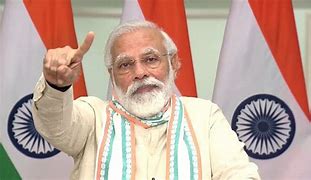Feature
Excessive judicial interference not good for investors: Jaitley

New York: “Excessive interference” by the judiciary in commercial arbitration is not good for the investor because it adds costs to Indian companies and the cabinet is considering changes in law to deal with that, Finance Minister Arun Jaitley said here Thursday.
“When India did legislate in terms of global compatibility, dispute redressal laws for international commercial arbitration, etc., the courts interpreted it to mean that ‘our jurisdictions are not ousted; we can interfere’,” Jaitley said. “Indian parties (to contracts) have suffered on account of this approach because then an essential ingredient of all contracts is that the venue of dispute redressal will be outside India (and) the substantive and procedural laws will also be outside India.”
“This has become very costly for Indian parties,” he added. “So an excessive interference or a tendency to have excessive judicial interference is not necessarily a move which is friendly to the interest of the investor itself.”
Participating in a discussion presided over by former US Treasury Secretary Timothy Geithner at the prestigious Council on Foreign Relations, Jaitley was answering a question from the audience about the effect of the judiciary on the economic and infrastructure development agenda.
“Some of the interventionist judgments of the courts have been examined by the government and by the Law Commission in India and, therefore, changes in our own dispute redressal law have been suggested,” he said. “Those changes are now before the cabinet and (will) hopefully nullify the impact of those judgments so that domestic tribunals or agreed tribunals can work on their own terms.”
On delays in the court system, Jaitley, who is a lawyer, said, “India’s judicial system is independent, but slow. Because it is very independent, the government’s ability to increase its pace is limited. The independent system has to improve upon its own speed and pace.”
“There is also a tendency to not restrict your own authority and power as a part of judicial discipline,” he added.
The focus of the session was on economic reforms in India. Geithner said, “In India today with a strong majority in parliament and a strong prime minister elected with a clear mandate and an excellent finance minister this looks like it will be the most promising period of reform in India in decades.”
Jaitley said he did not expect parliament to be barrier to implementing the economic agenda even thought the Bharatiya Janata Party does not have a majority in the Rajya Sabha.
“Parliament is a good institution for consensus building” and most bills get accepted after a consensus emerges in parliamentary committees with some give and take, he said.
In a reference to the land acquisition bill, he said, “Very few get blocked in the upper house and they don’t get blocked in perpetuity. So far not one of our government bill has been rejected. Two of them are stalled; stalled means that they are being discussed in the committees, but they haven’t been rejected.”
Asked about retrospective legislations, Jaitley gave a categorical assurance to the audience dominated by businessmen and bankers: “This government will not legislate anything that is retrospective.”
“Any decision that is retrospective, except in some very unusual circumstances, which creates fresh liabilities is certainly not acceptable,” he added.
On economic growth, he said with the “aspirational” generation that has come up since the economic reforms began in 1991, Indians will not be satisfied with a growth rate of seven or seven and a half percent. “Everybody, including me and the prime minister, realises that probably our potential is a little higher than that.”
The next two or three years are going to very critical in achieving a higher growth rate because the economic reforms that are in in the pipeline are going to be implemented, he said.
Entertainment
Meghalaya Reserves Legalized Gambling and Sports Betting for Tourists

The State Scores Extra High on Gaming-Friendly Industry Index
Meghalaya scored 92.85 out of 100 possible points in a Gaming Industry Index and proved to be India’s most gaming-friendly state following its recent profound legislation changes over the field allowing land-based and online gaming, including games of chance, under a licensing regime.
The index by the UK India Business Council (UKIBC) uses a scale of 0 to 100 to measure the level of legalisation on gambling and betting achieved by a state based on the scores over a set of seven different games – lottery, horse racing, betting on sports, poker, rummy, casino and fantasy sports
Starting from February last year, Meghalaya became the third state in India’s northeast to legalise gambling and betting after Sikkim and Nagaland. After consultations with the UKIBC, the state proceeded with the adoption of the Meghalaya Regulation of Gaming Act, 2021 and the nullification of the Meghalaya Prevention of Gambling Act, 1970. Subsequently in December, the Meghalaya Regulation of Gaming Rules, 2021 were notified and came into force.
All for the Tourists
The move to legalise and license various forms of offline and online betting and gambling in Meghalaya is aimed at boosting tourism and creating jobs, and altogether raising taxation revenues for the northeastern state. At the same time, the opportunities to bet and gamble legally will be reserved only for tourists and visitors.
“We came out with a Gaming Act and subsequently framed the Regulation of Gaming Rules, 2021. The government will accordingly issue licenses to operate games of skill and chance, both online and offline,” said James P. K. Sangma, Meghalaya State Law and Taxation Minister speaking in the capital city of Shillong. “But the legalized gambling and gaming will only be for tourists and not residents of Meghalaya,” he continued.
To be allowed to play, tourists and people visiting the state for work or business purposes will have to prove their non-resident status by presenting appropriate documents, in a process similar to a bank KYC (Know Your Customer) procedure.
Meghalaya Reaches Out to a Vast Market
With 140 millions of people in India estimated to bet regularly on sports, and a total of 370 million desi bettors around prominent sporting events, as per data from one of the latest reports by Esse N Videri, Meghalaya is set to reach out and take a piece of a vast market.
Estimates on the financial value of India’s sports betting market, combined across all types of offline channels and online sports and cricket predictions and betting platforms, speak about amounts between $130 and $150 billion (roughly between ₹9.7 and ₹11.5 lakh crore).
Andhra Pradesh, Telangana and Delhi are shown to deliver the highest number of bettors and Meghalaya can count on substantial tourists flow from their betting circles. The sports betting communities of Karnataka, Maharashtra, Uttar Pradesh and Haryana are also not to be underestimated.
Among the sports, cricket is most popular, registering 68 percent of the total bet count analyzed by Esse N Videri. Football takes second position with 11 percent of the bets, followed by betting on FIFA at 7 percent and on eCricket at 5 percent. The last position in the Top 5 of popular sports for betting in India is taken by tennis with 3 percent of the bet count.
Local Citizens will Still have Their Teer Betting
Meghalaya residents will still be permitted to participate in teer betting over arrow-shooting results. Teer is a traditional method of gambling, somewhat similar to a lottery draw, and held under the rules of the Meghalaya Regulation of the Game of Arrow Shooting and the Sale of Teer Tickets Act, 2018.
Teer includes bettors wagering on the number of arrows that reach the target which is placed about 50 meters away from a team of 20 archers positioned in a semicircle.
The archers shoot volleys of arrows at the target for ten minutes, and players place their bets choosing a number between 0 and 99 trying to guess the last two digits of the number of arrows that successfully pierce the target.
If, for example, the number of hits is 256, anyone who has bet on 56 wins an amount eight times bigger than their wager.























